Jamestown Settlement – History Comes Alive
You might be tempted to think that the phrase “Where History Comes Alive” is just a bit overused in the context of historical recreations and to a certain extent that is true. But those concerns definitely don’t apply to Jamestown Settlement where historical accuracy, knowledgable re-enactors and a great location on the James River really did make Alison and me feel like we had stepped into the past. Won’t you join us as we explore the various components of Jamestown Settlement that tell the story of the first permanent British colony in America?
What is Jamestown Settlement?
The British were relatively late to the North American colonial game, but they ended up with a Goldilocks result. The Spanish had settled on lands that included modern day Florida and lands south of there over 100 years before the British got into the act. The French claimed the lands that comprise modern day Quebec and Atlantic Canada. What both France and Spain left for the British was the swath of territory in the temperate climes of Eastern North America that came to be the Thirteen Colonies. The first English attempt at colonizing North America in 1585 was a dismal failure known as the Lost Colony of Roanoke Island which has only recently been positively identified on Roanoke Island, North Carolina. We visited Fort Raleigh National Historic Site in 2016 and learned the history of this colony and why it failed.
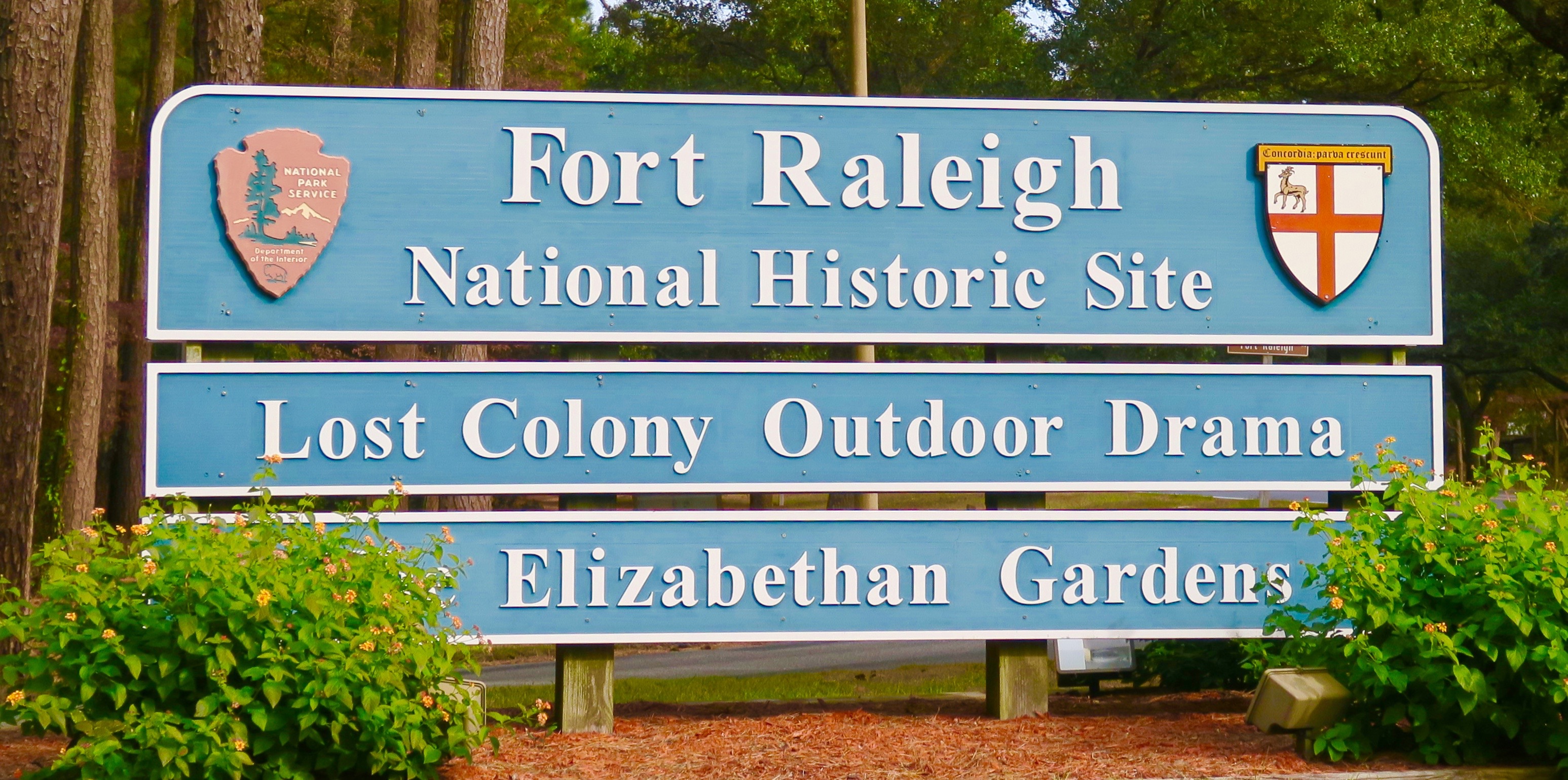
Now we were going to learn the history of the first colony that was a success and led the way to the creation of Virginia’s tobacco based plantation system, by visiting Jamestown Settlement.
One of the reasons England was late in starting New World colonies was that the British Crown had no interest in financing them. Unlike Spain, France and Portugal whose colonies always required a royal patron, the first British colonies were private ventures by businessmen looking to make a fortune. Such was the case with the second attempt at establishing a colony on the Eastern Seaboard. The Virginia Company, with a corporate charter granted by James I, sent 104 men and boys in three ships to find a suitable location somewhere between Cape Fear and Long Island Sound. That was a heck of a lot of ground to choose from, but the choice was narrowed by three important criteria. The settlement had to be surrounded by water on three sides, well inland (the Spanish were quite familiar with the east coast) and most importantly, not on a site already occupied by native peoples. On a tiny spit of land on a river they would name the James, the adventurers stepped ashore in 1607 and started building Jamestown, the first permanent English colony in present day United States.
Jamestown Settlement is administered and operated by the non-profit Jamestown-Yorktown Foundation, an agency of the Virginia Commonwealth which also is responsible for the recently opened American Revolution Museum at Yorktown, a must visit attraction in the Williamsburg area. I wrote this post explaining why.
Not to be confused with the archaeological site, Historic Jamestowne which is part of Colonial National Historic Park, Jamestown Settlement consists of a large modern museum and and a recreation of the original town within a palisade, a Powhatan Indian village and the three ships that bought the settlers to Virginia. I strongly recommend visiting Jamestown Settlement before visiting the National Historic Park as it will give you a much better idea of what took place there and why it occupies such an important place in American history.
Visiting Jamestown Settlement – The Museum
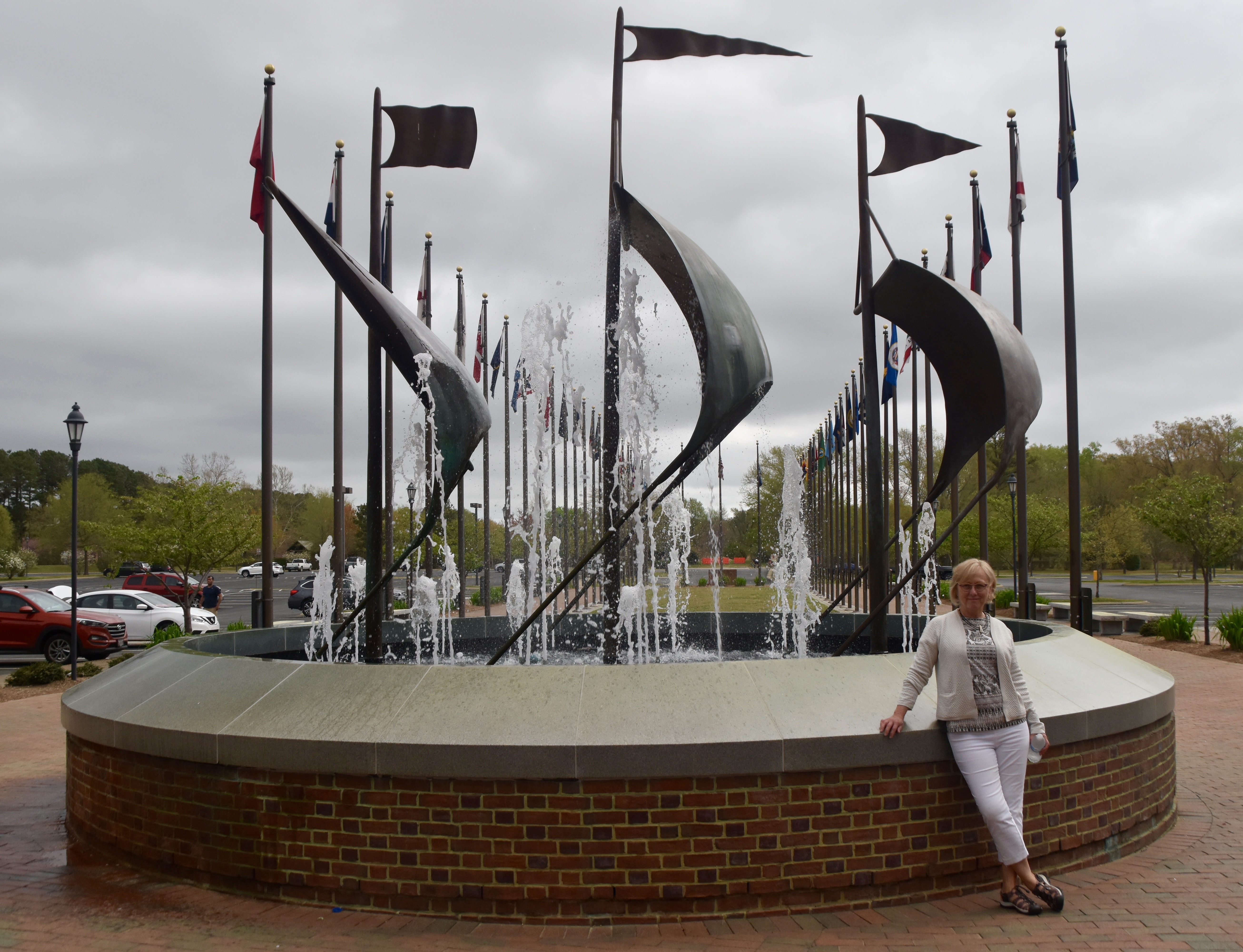
After parking your vehicle you will pass by this fountain with a stylized version of the three ships that bought the first Englishmen to America. I thought it was very well done.
Here is the entrance to Jamestown Settlement. Within you will find a large entry hall, a well stocked gift shop, a restaurant, a theatre and the museum.
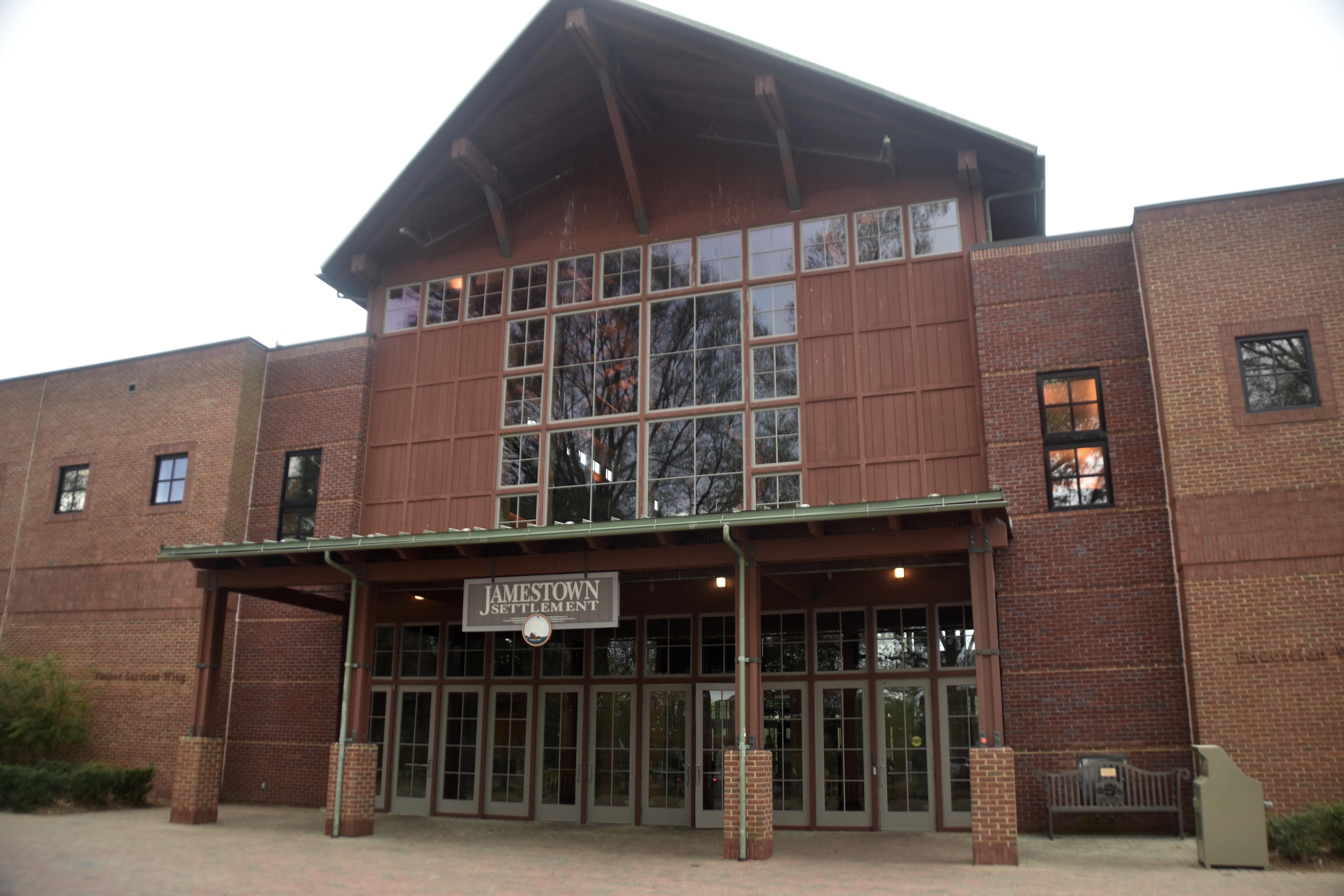
The starting point for your visit should be the theatre to watch the short film 1607:A Nation Takes Root which gives a good introduction to the creation of the Virginia Company, the landing and building of the first settlement at Jamestown, the relationship between the English and the Powhatan Indians and the importation of the first slaves in 1619. I am always surprised at how many people forego these introductions to rush right into the exhibits, which is a mistake. Context is everything in visiting a place like Jamestown Settlement and watching the into film will provide that – so don’t skip it!
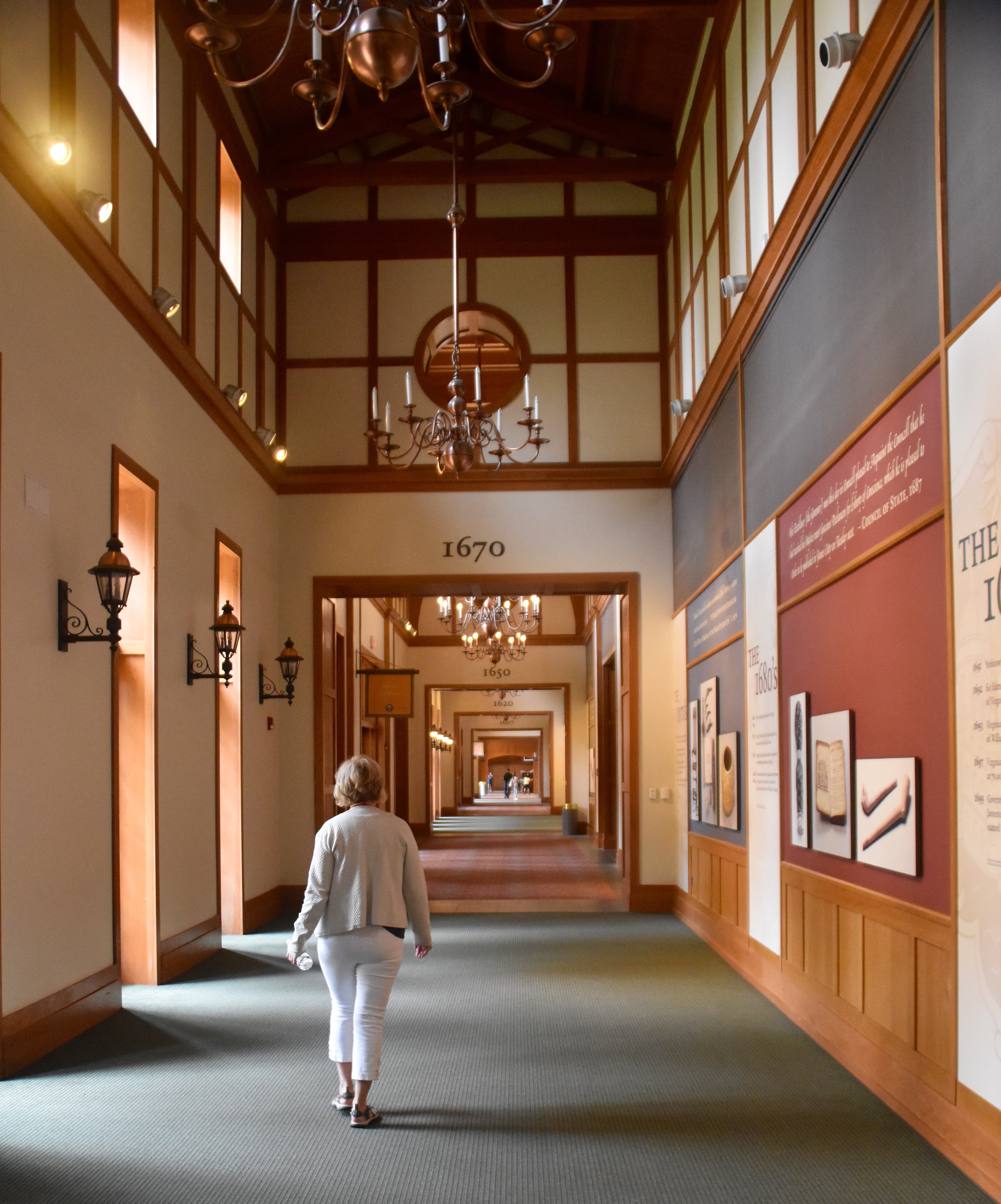
The museum exhibits are arranged in chronological order and focus on the interrelationship of the English settlers, the Powhatan Indians and the African slaves that came to be vital to the tobacco based economy that developed around the James and York Rivers in the early 17th century.
Unfortunately the museum does not allow photography so I have no photos of the interior, but expect to spend up to an hour here before heading for the outdoor exhibits. The most interesting part for most people will probably be the narratives surrounding Captain John Smith, the de facto head of the colony and his relationship with Wahunsonacock, head of the Powhatan tribal groups that had been living in this area of Virginia for thousands of years. Everyone knows the legend of his daughter Pochahontas and how she supposedly saved the life of John Smith, became a Christian and married John Rolfe. Most historians now agree that Pochahontas’ story is as much fiction as fact and the museum does a good job of taking the middle road in what, for some, has become a very touchy and controversial part of American history. Suffice it to say that unlike most Disney heroines, Pochahontas was a real person and without her intercession Jamestown may have suffered the same fate as the Lost Colony.
Visiting Jamestown – The Powhatan Village
Leaving the museum you can take the boardwalk that leads to both the Powhatan Village and the anchorage where the three ships are moored. We chose to visit the Powhatan Village followed by James Fort and then the ships, but you can do it any order that suits you.
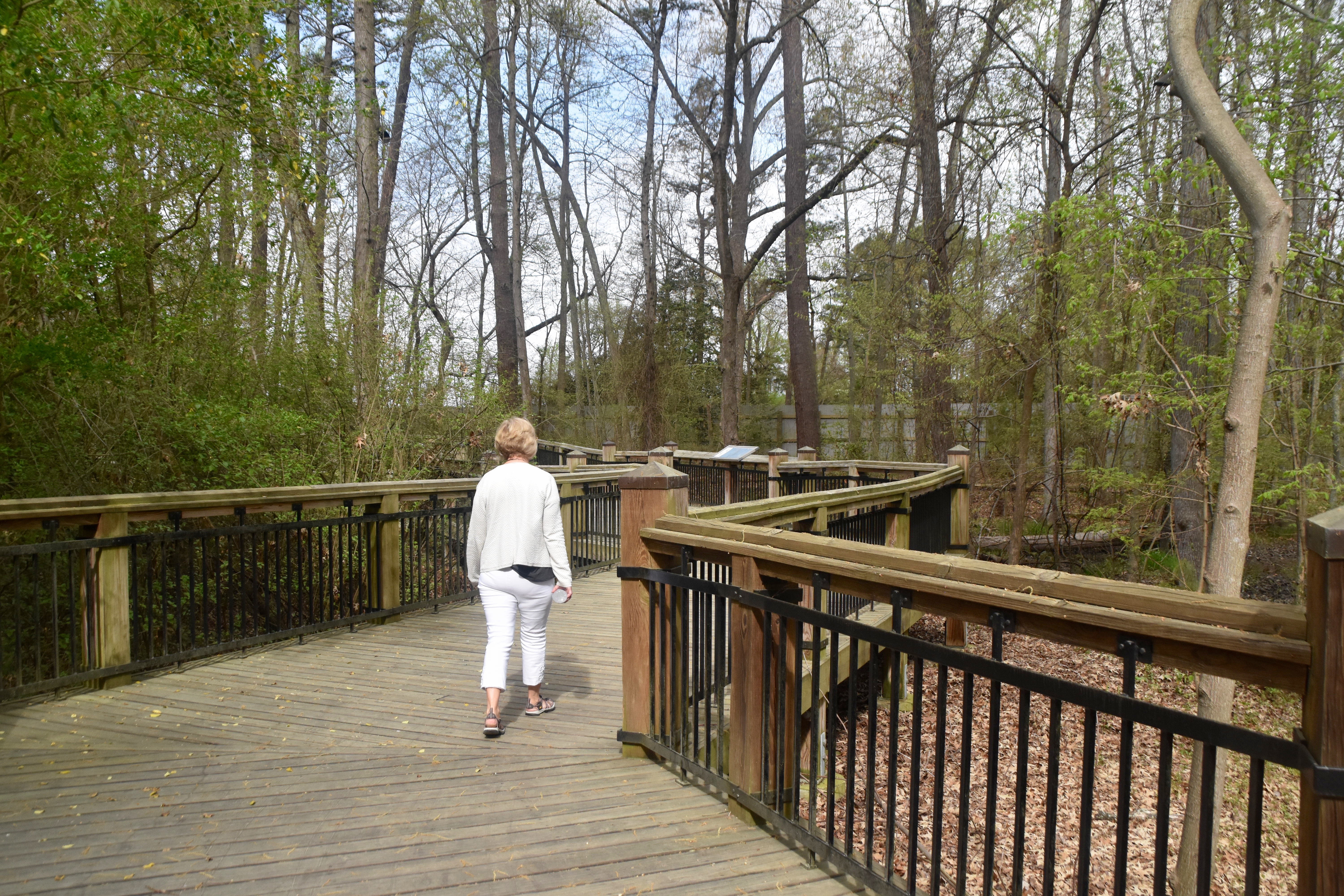
The Powhatans were an Algonquian tribe that lived in organized villages throughout a large territory around Chesapeake Bay. They were agriculturalists who also reaped the plentiful harvests of the Chesapeake Bay and surrounding Carolinian forests.
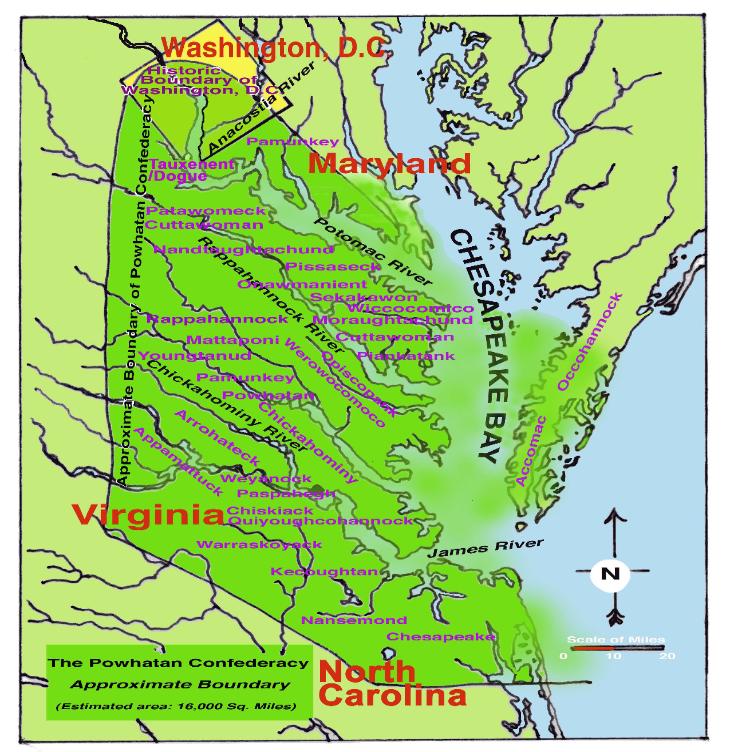
Visiting the Powhatan village at Jamestown Settlement gave me a much better realization of just how adapted to the environment and frankly, quite comfortable, this lifestyle must have been. Perhaps not the Edenic life of the indigenous people Jean-Jacques Rousseau described, but not far off.
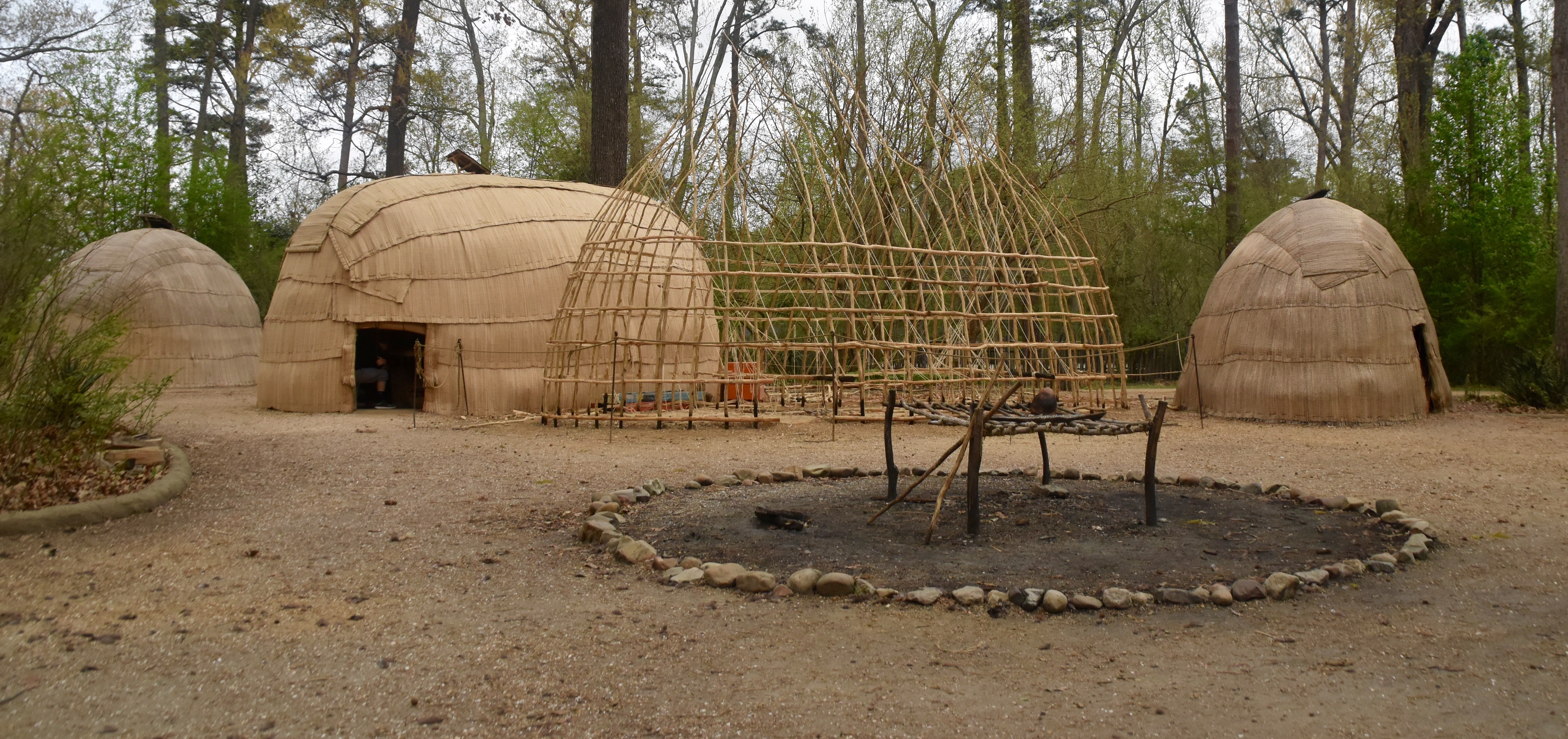
I could live in one of these lodges quite easily.
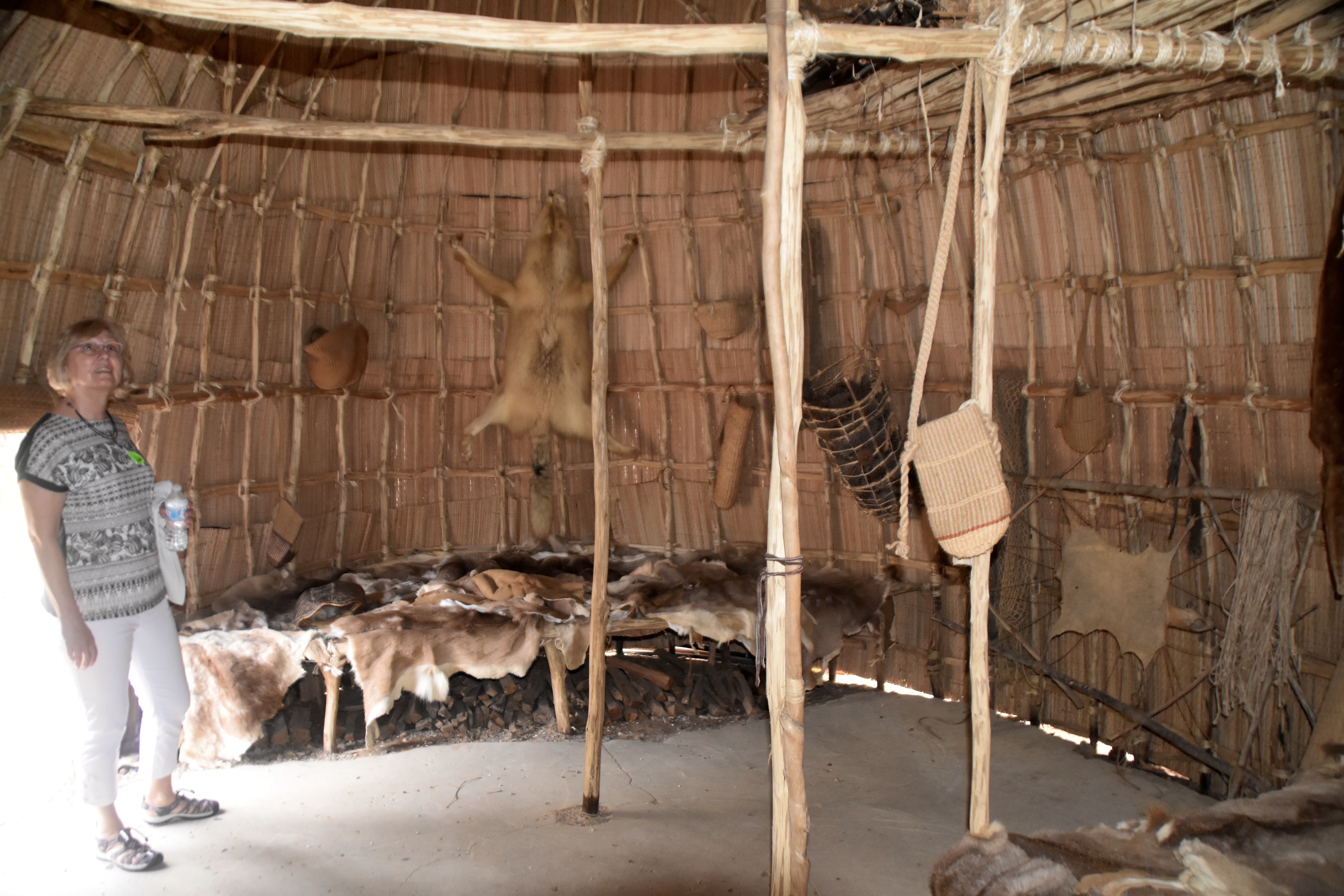
The bed of furs looks positively inviting.
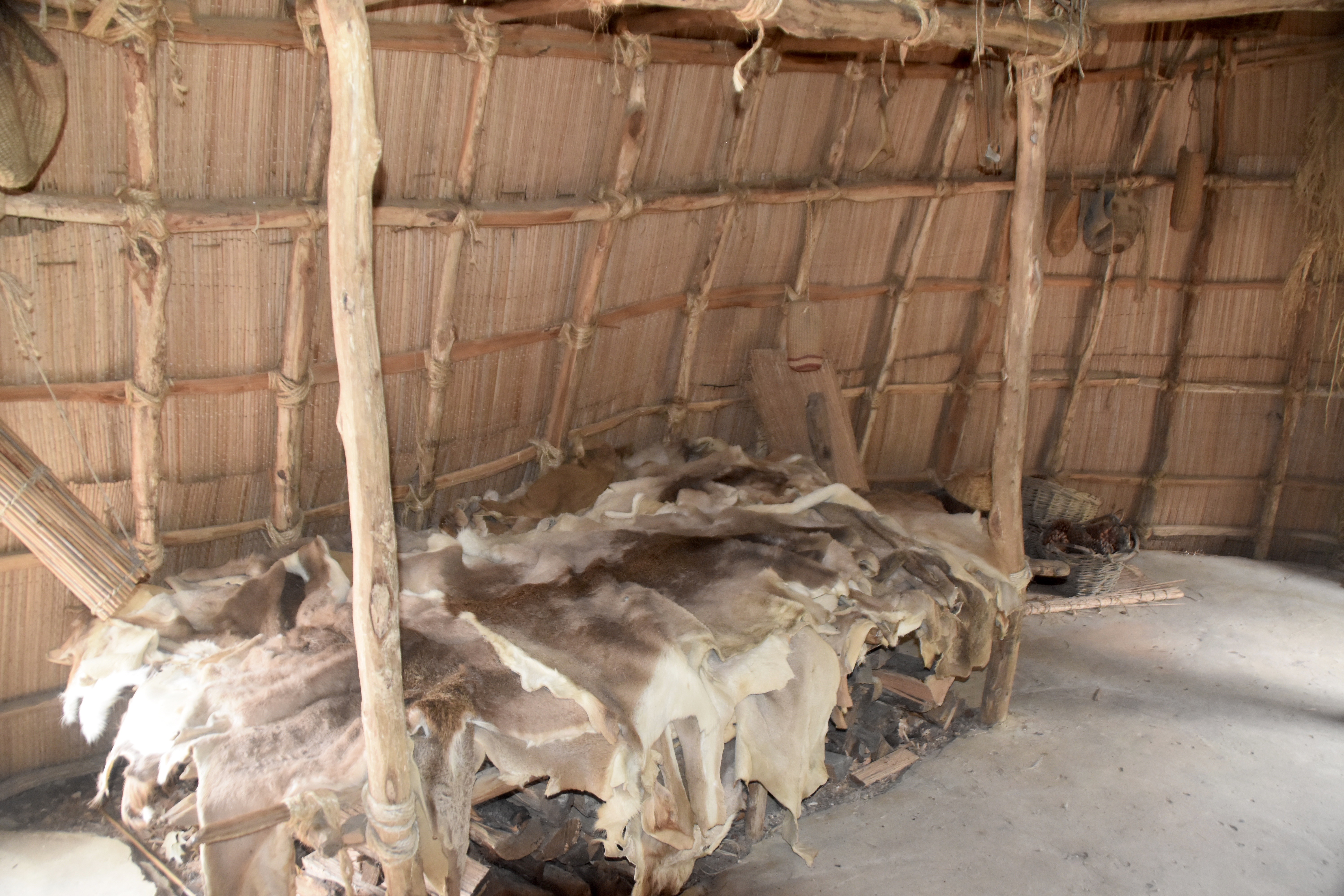
It was here that we met our first of many historical interpreters at Jamestown Settlement. This young man was of Powhatan descent and provided a wealth of knowledge about Powhatan customs including clothing, hunting, lodge building, you name it.
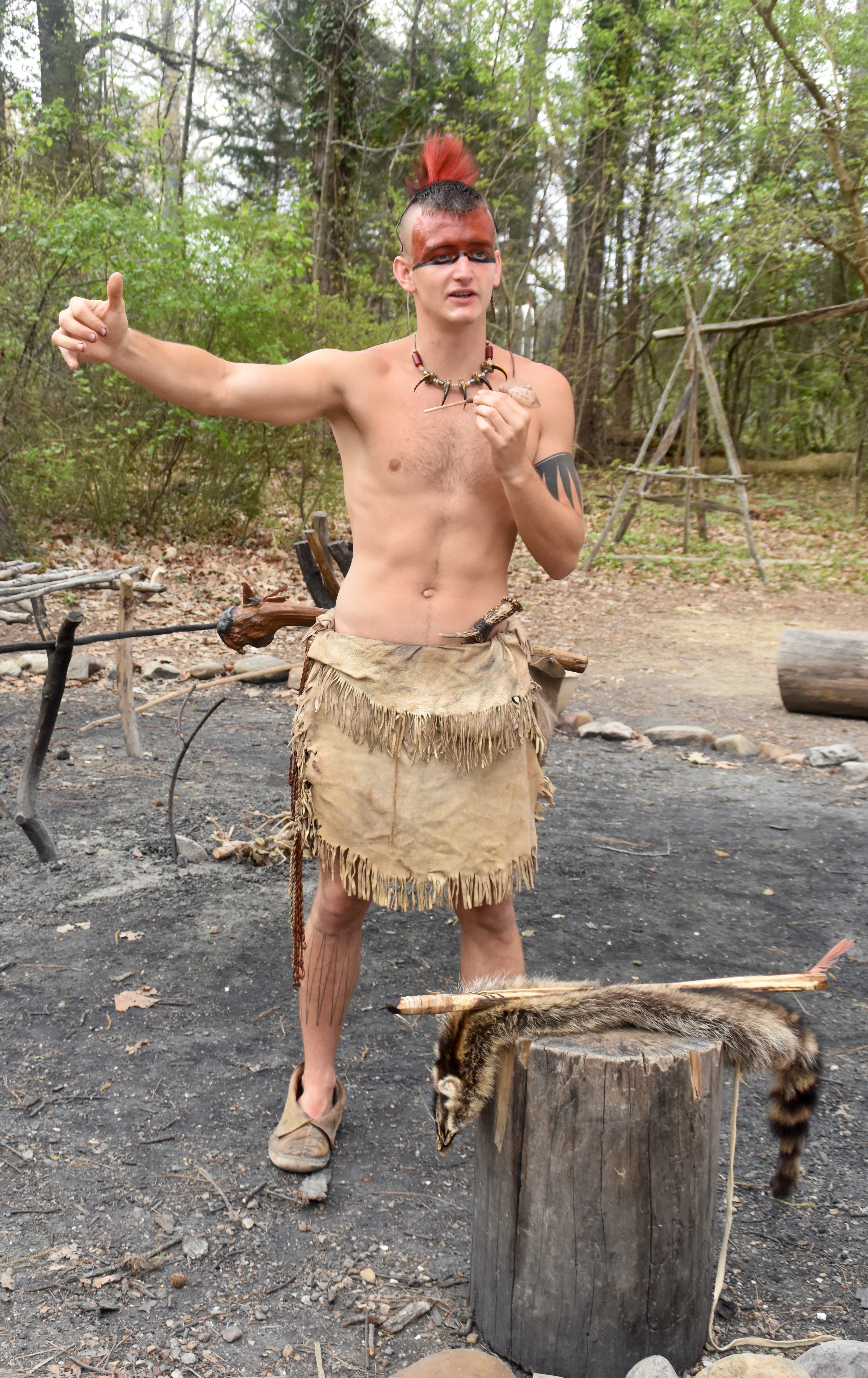
This is Alison sitting in a space where Powhatan women would weave baskets and pass on the knowledge to young girls of the village.
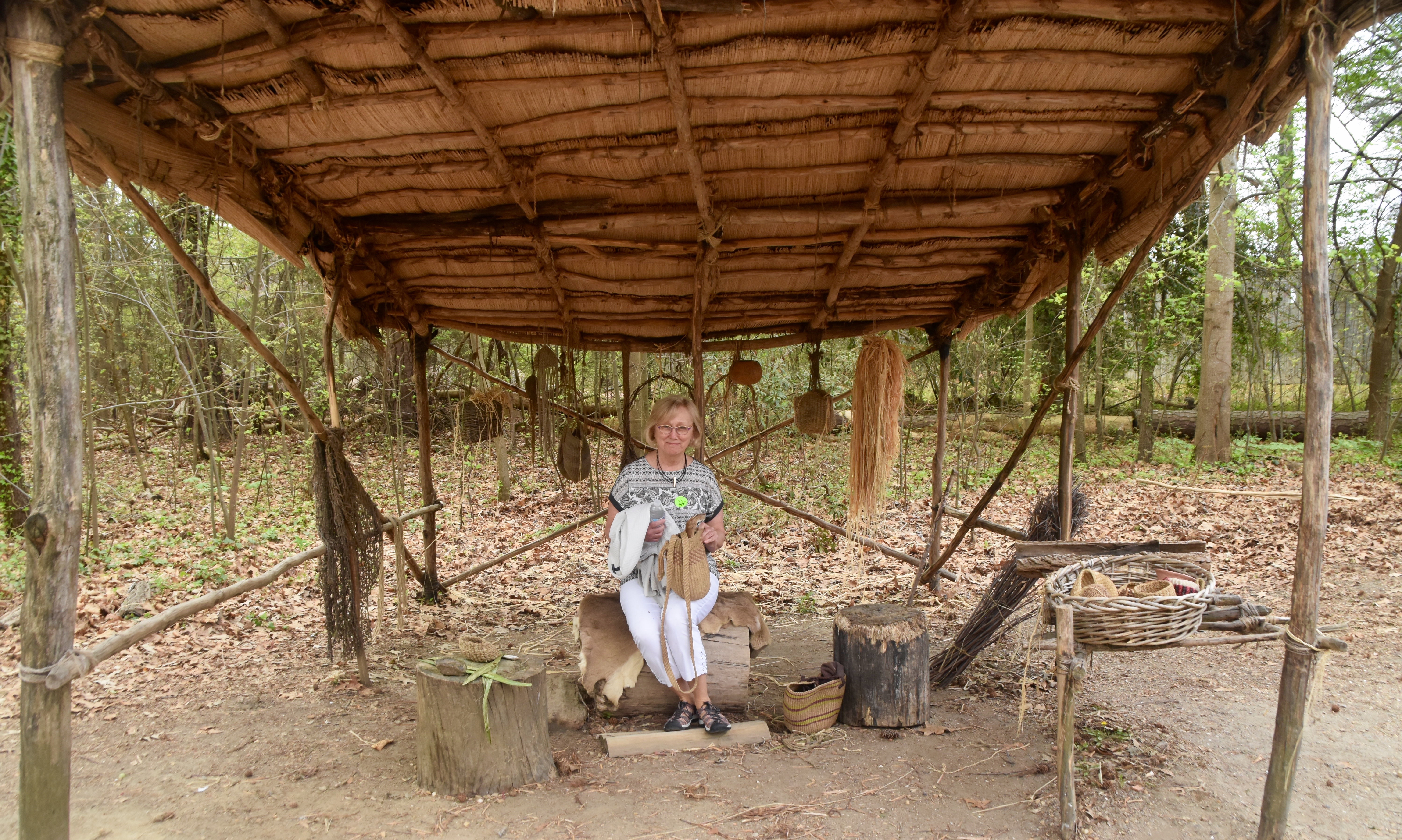
Fort James
The original Jamestown is now long gone, but through plans and early descriptions, Jamestown Settlement has recreated the original James Fort as it looked from 1610-1614. By 1610 the English relationship with the Powhatan’s had soured enough that they decided to build a fortified village inside a palisade which became Fort James. Stepping inside, one might be forgiven for thinking you had walked into an English village of the era and not an American colony.
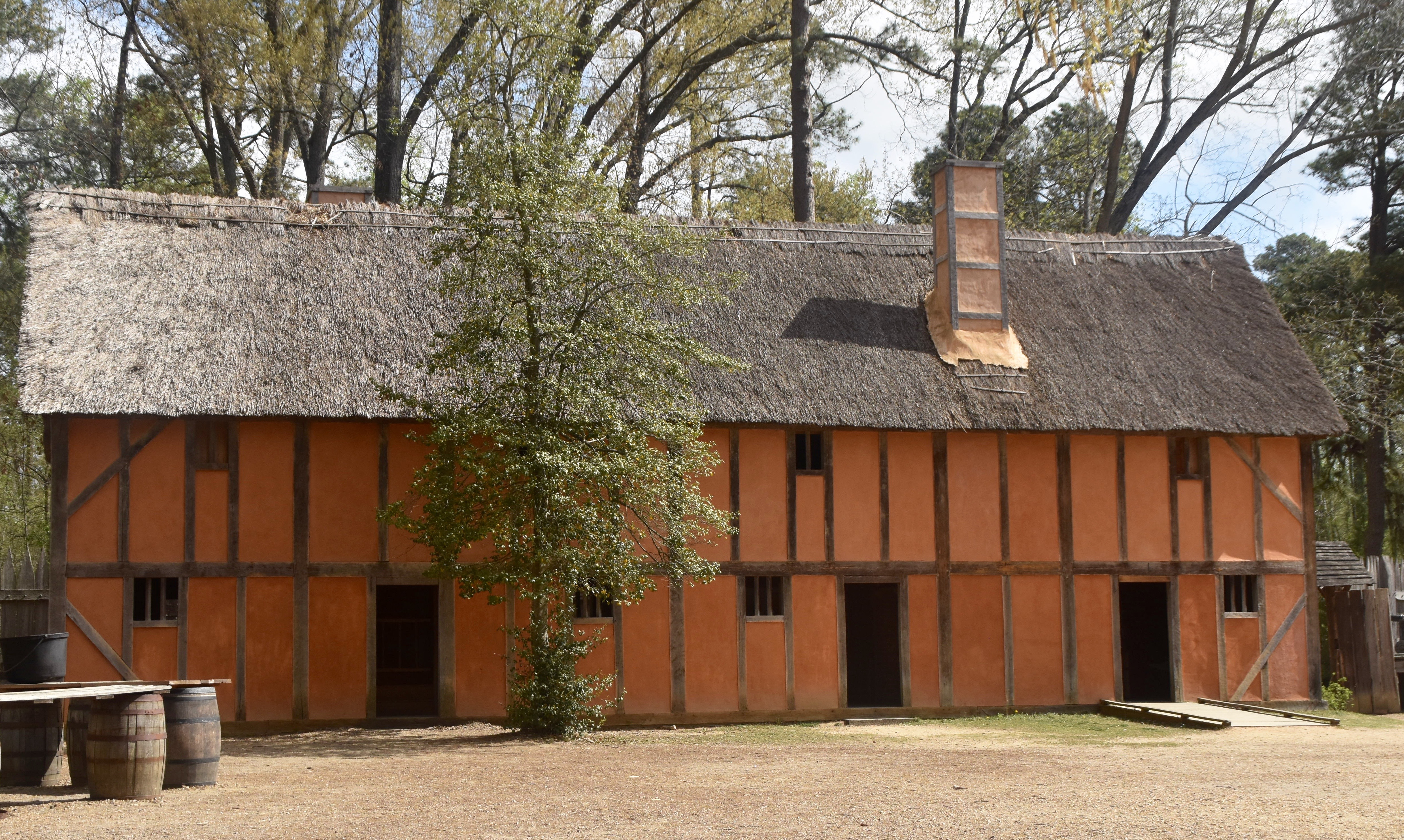
The building are constructed in the half-timber wattle and daub style of 17th century England with thatched roofs and brick chimneys. This storehouse building was modeled along the lines of an actual storehouse that was excavated at the original Jamestown.
James Fort is not just a collection of buildings and artefacts, but is populated with historical interpreters going about their lives just as they would have over four hundred years ago.
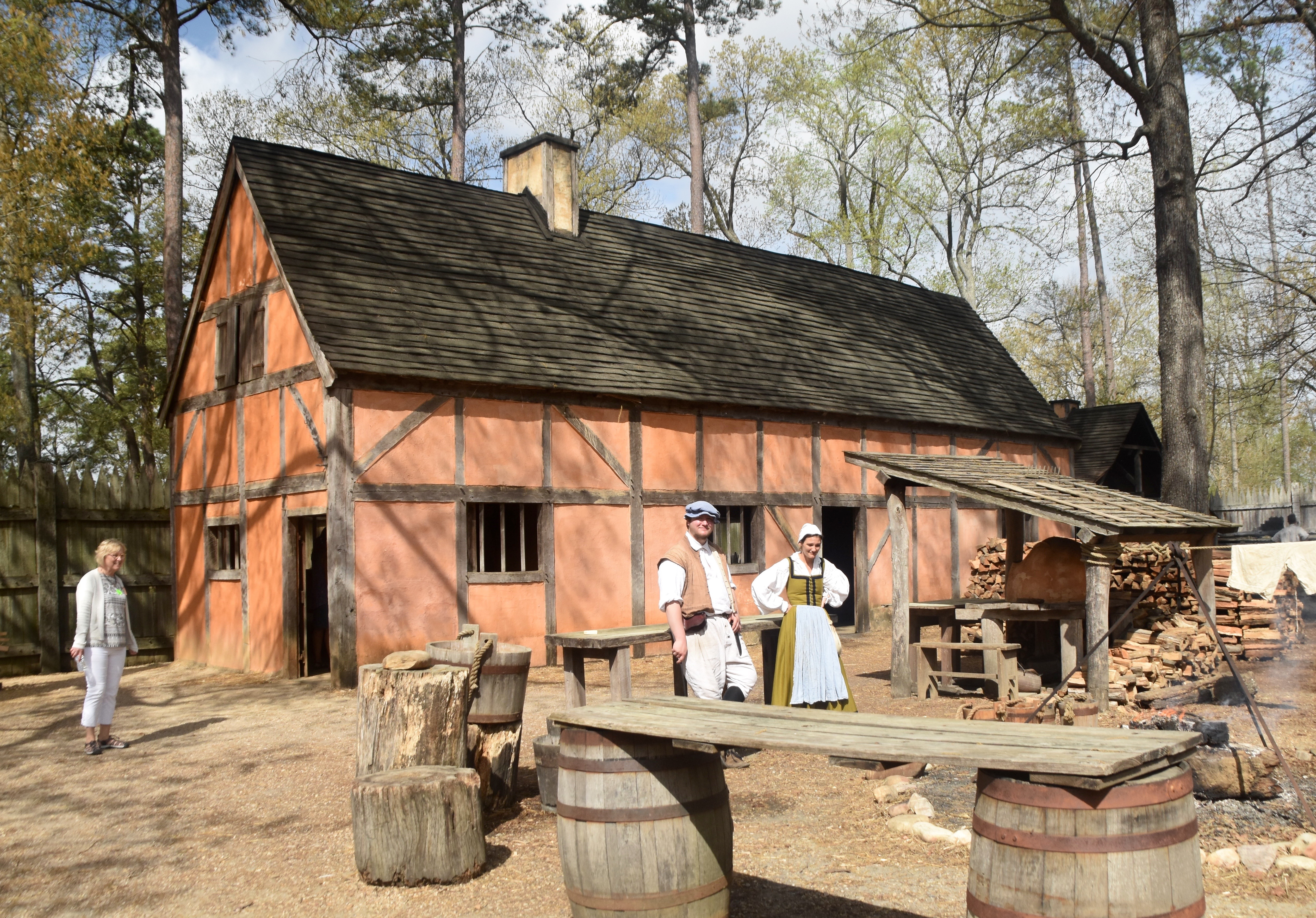
Among the people you will meet are the blacksmith who toils in incredibly hot conditions to fashion any number of tools and weapons necessary for the survival of the early colonists.
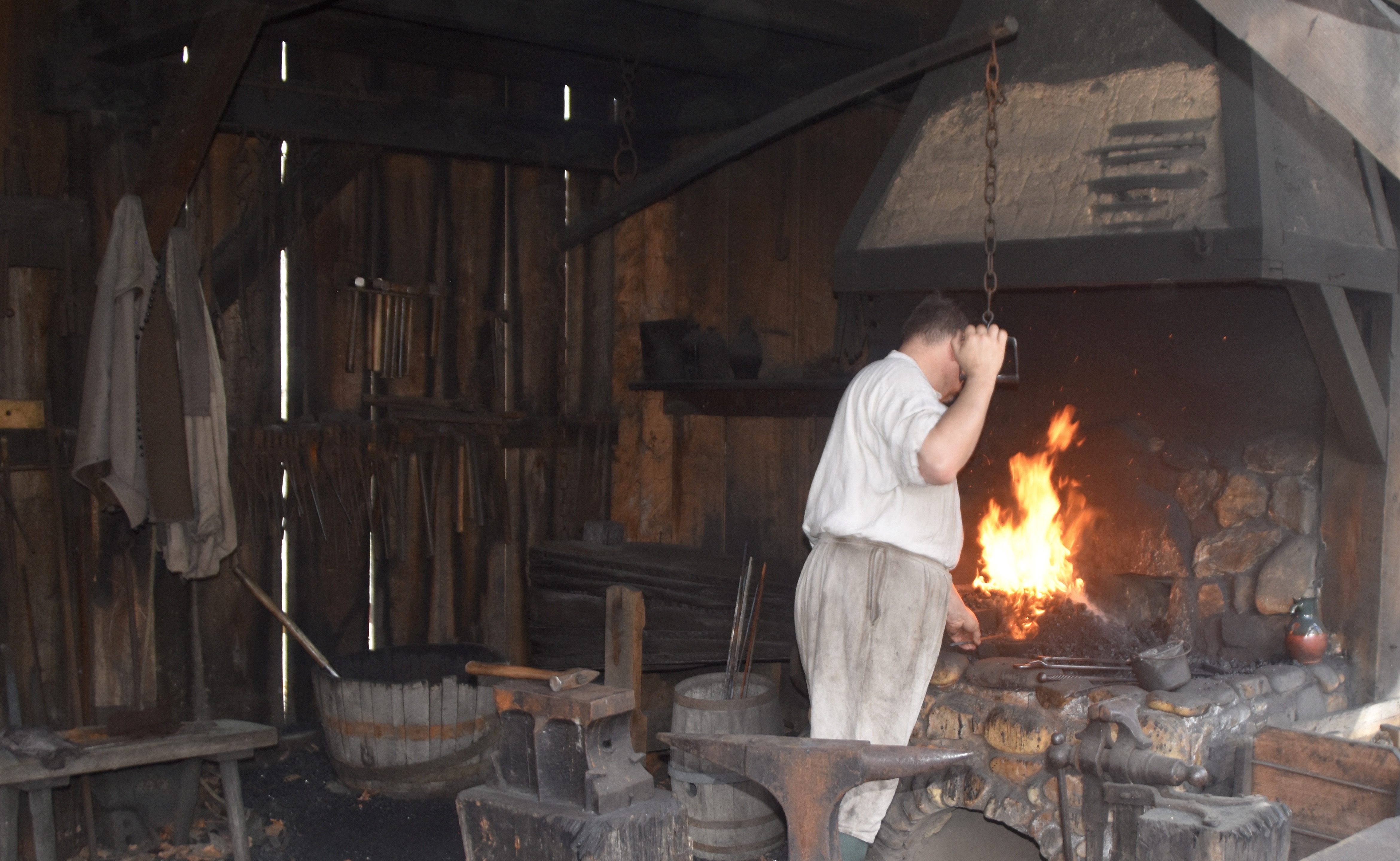
And this fellow, the Jamestown armourer, who seemed to know everything possible and more about 17th century armour, weapons and ballistics.
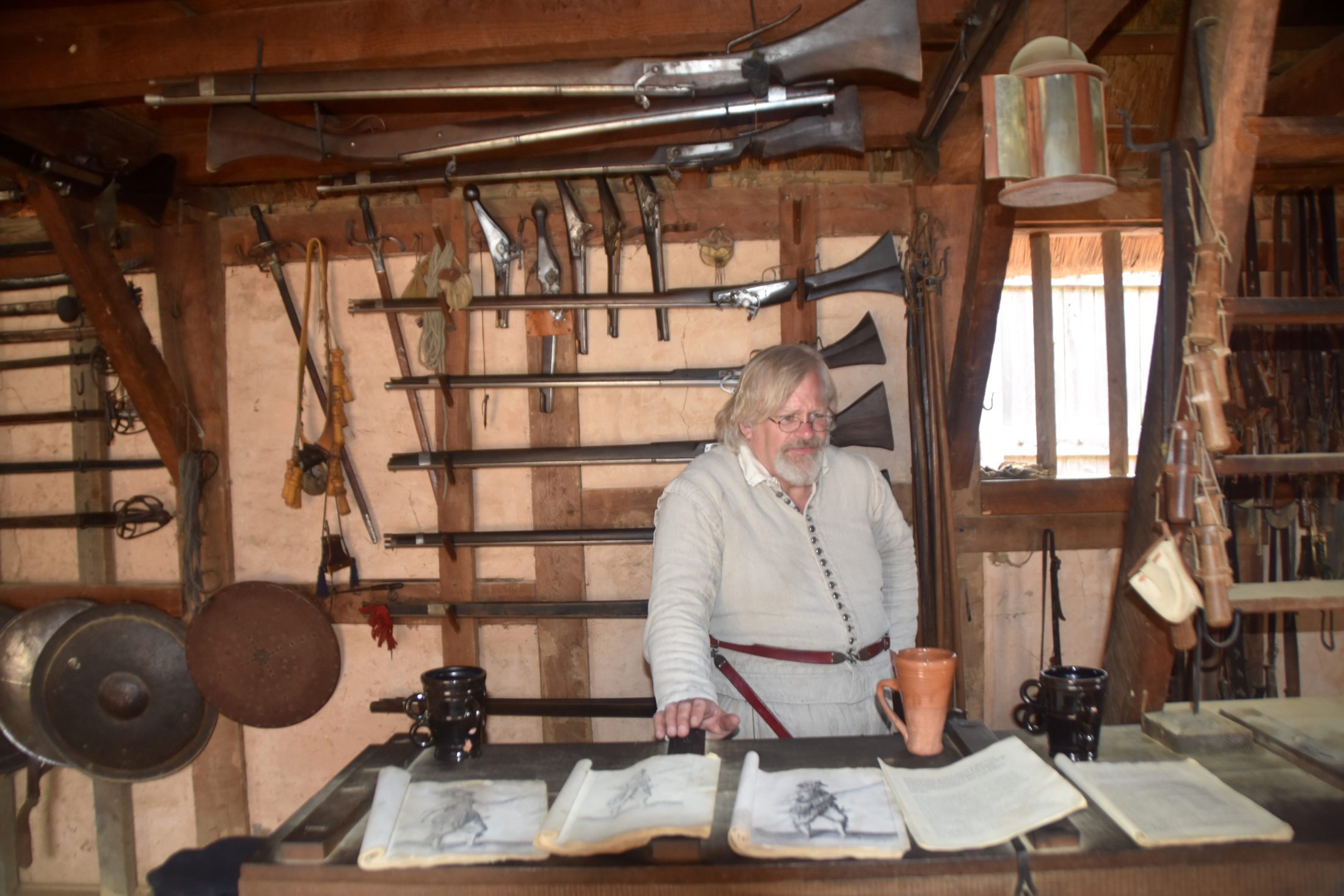
Many images of Captain John Smith depict him in armour and it was a bit dismaying to think of how hot these things must have been to wear, especially in the heat of a Virginia summer. Contrast wearing these to what the Powhatan lad was wearing.
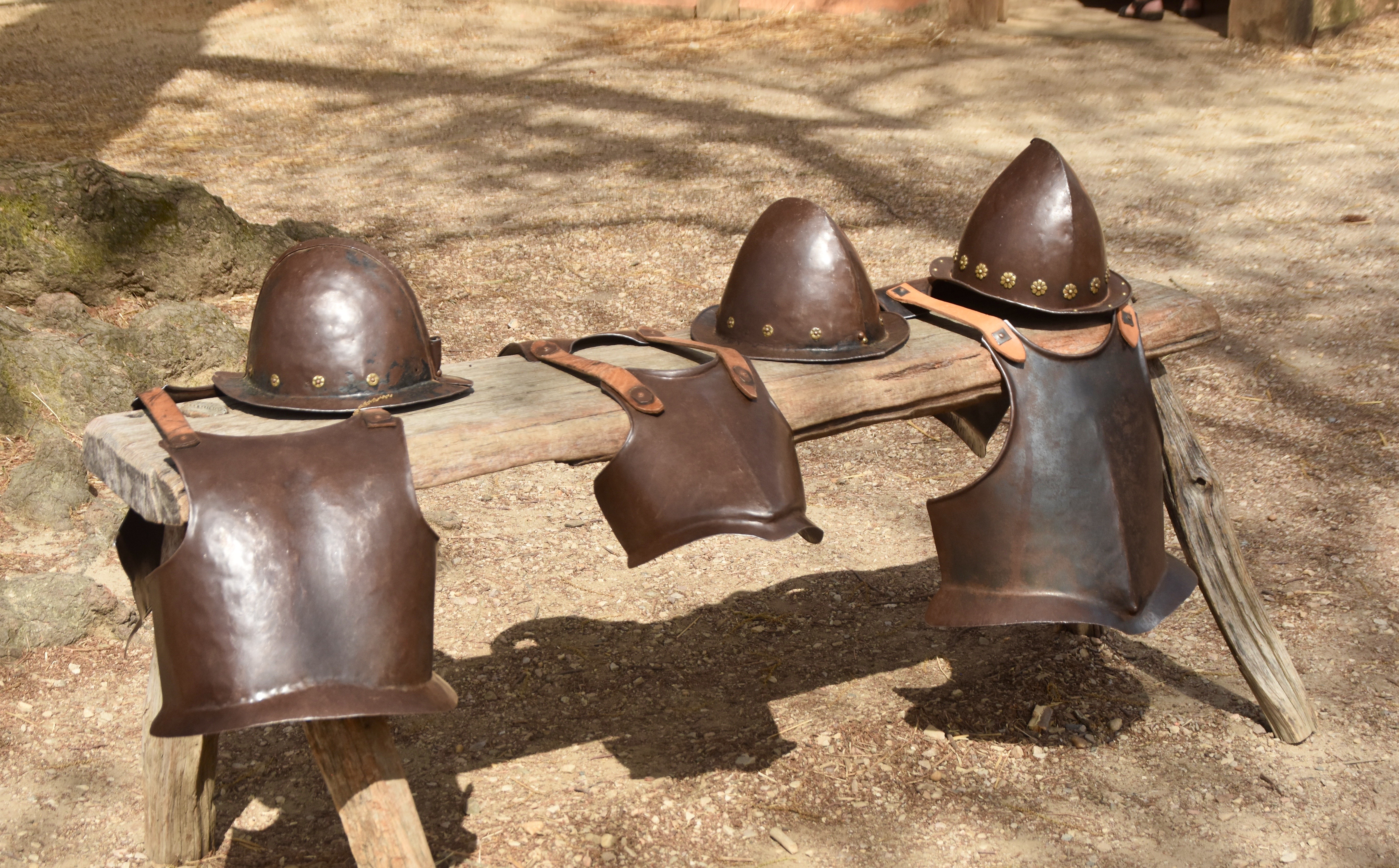
Other noteworthy buildings in James Fort include the Governor’s house, the grandest structure within the palisade. It is believed that the original was constructed by Sir Thomas Gates, one of the most fascinating characters associated with early Jamestown. A compatriot of Sir Francis Drake, Sir Walter Raleigh and the Earl of Essex, he had participated in numerous raids on Spanish possessions in the New World. He brought his warlike ways to Jamestown and was at least partially responsible for igniting the First Anglo-Powahatan War.
This bed looks nice, but I have wonder if it’s any more comfortable than the Powhatan’s fur beds.
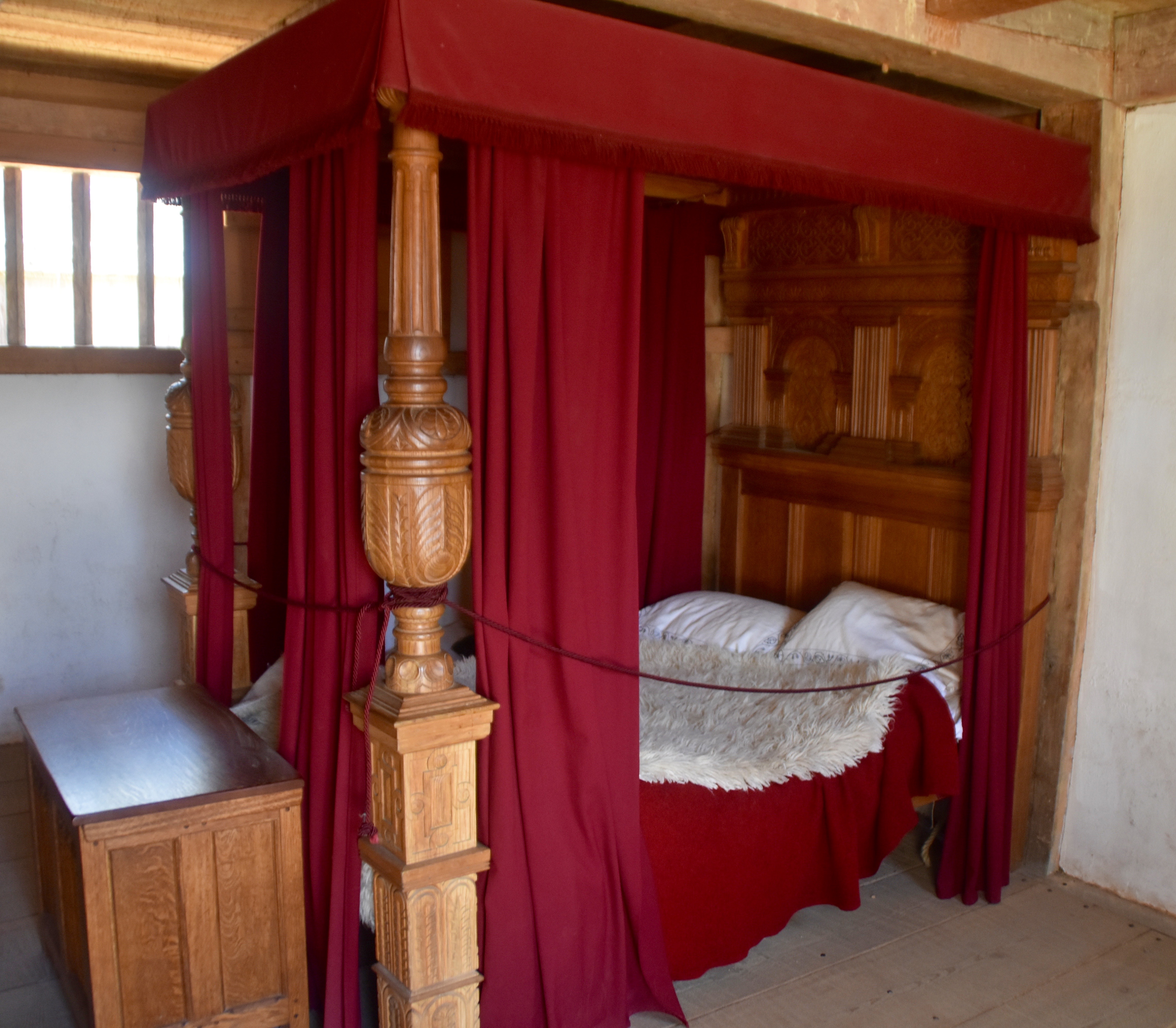
This is an interesting detail from a desk in the Governor’s house.
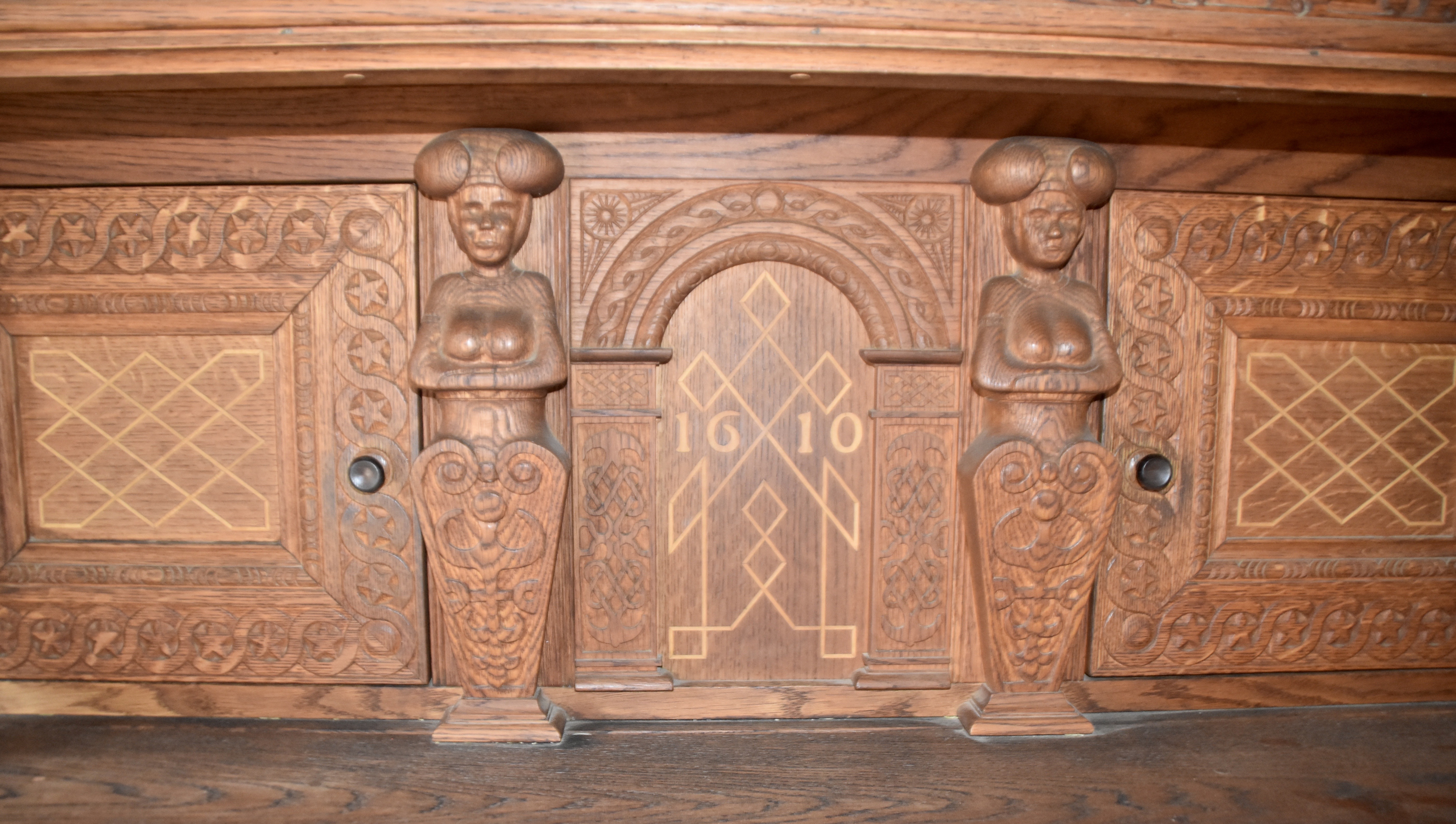
No self-respecting early colony would be found without a church and Jamestown was no exception with cast iron bells imported from England to ring when it was time to drop everything and attend a Church of England service.
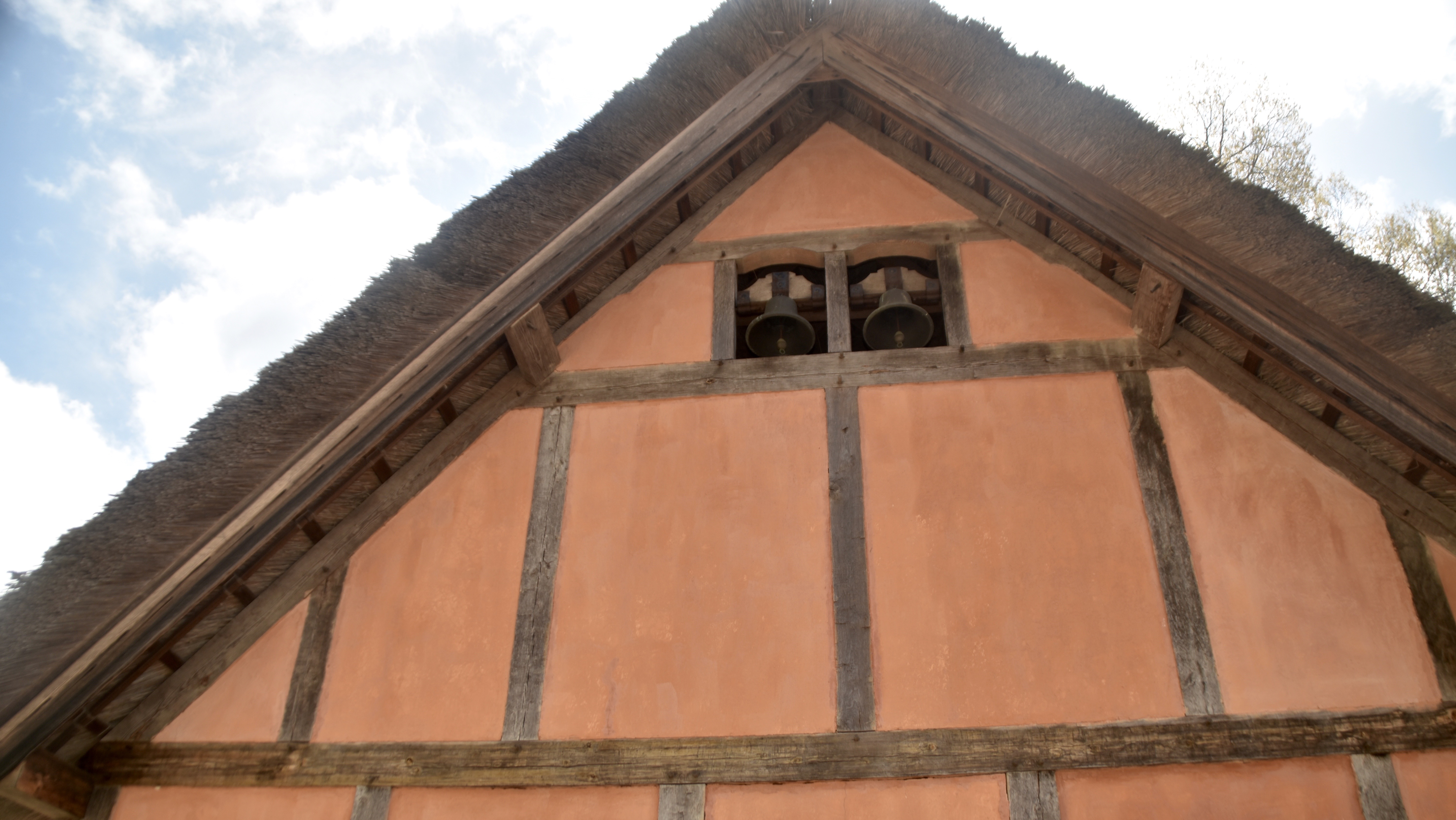
This is the church interior where a visiting high school class was getting a sermon from an impromptu teenage minister.
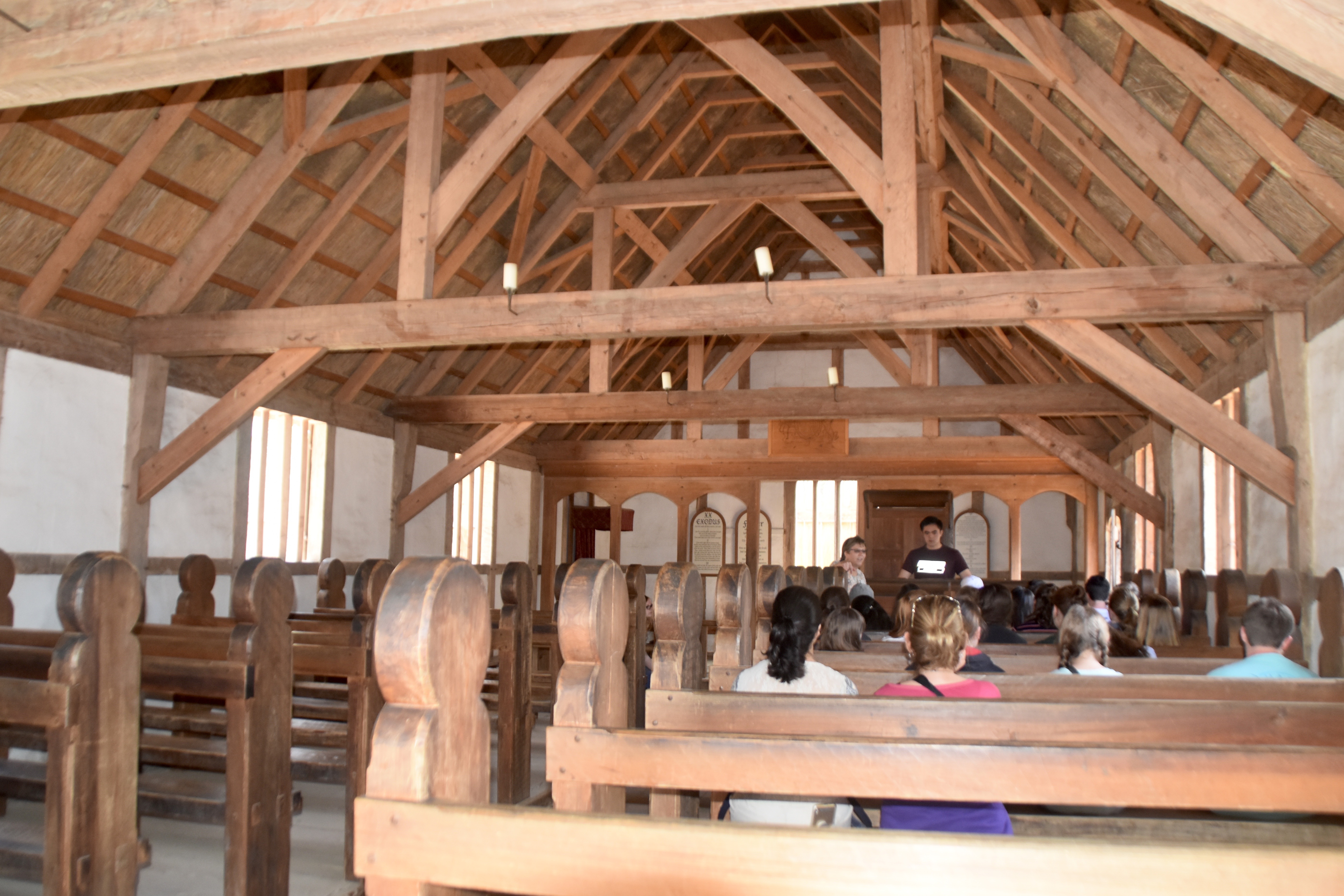
At the front of the church were passages from Exodus with the first three commandments and beside it, the Lord’s Prayer. Note the differences in the English language as written in the early 17th century and today.
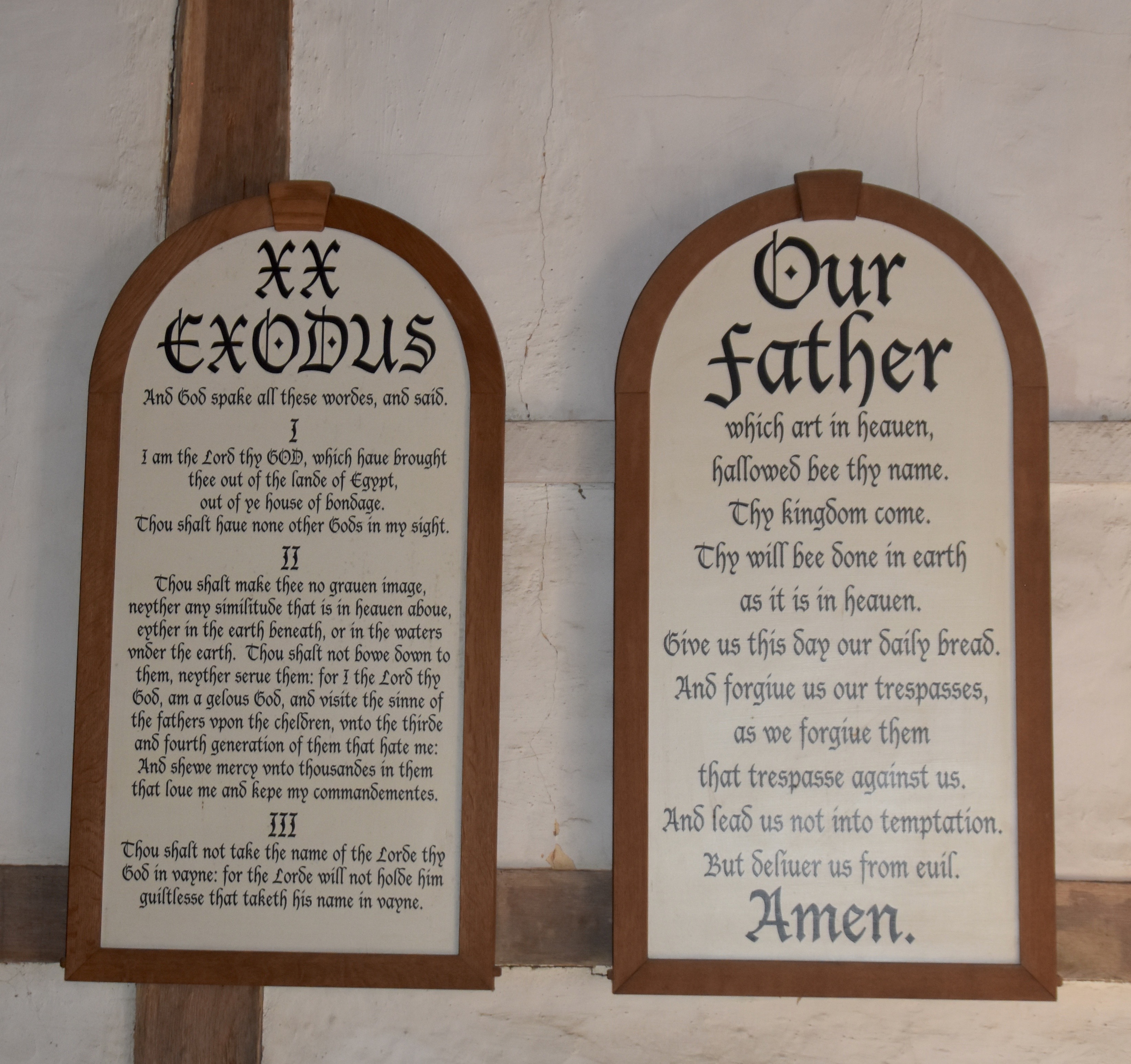
The more time you spend inside James Fort the more the illusion of actually stepping back in time is reinforced and almost becomes like a reverie. We loved it, but it was time to move on.
The Jamestown Settlement Ships
Coming from a famous nautical city, Halifax, Nova Scotia I have seen many, many wooden tall ships over the last number of decades as they regularly visit every third summer or so. However, viewing these ships is always in the backdrop of a modern North American city with tall buildings, traffic noise and other distractions. Viewing the three ships moored at Jamestown Settlement is a completely different experience because there are no such reminders that this is the 21st century and not the 17th.
Looking at the Godspeed and Discovery from the bow of the much larger Susan Constant you realize that this is exactly how things would have looked on this James River anchorage over 400 years ago.
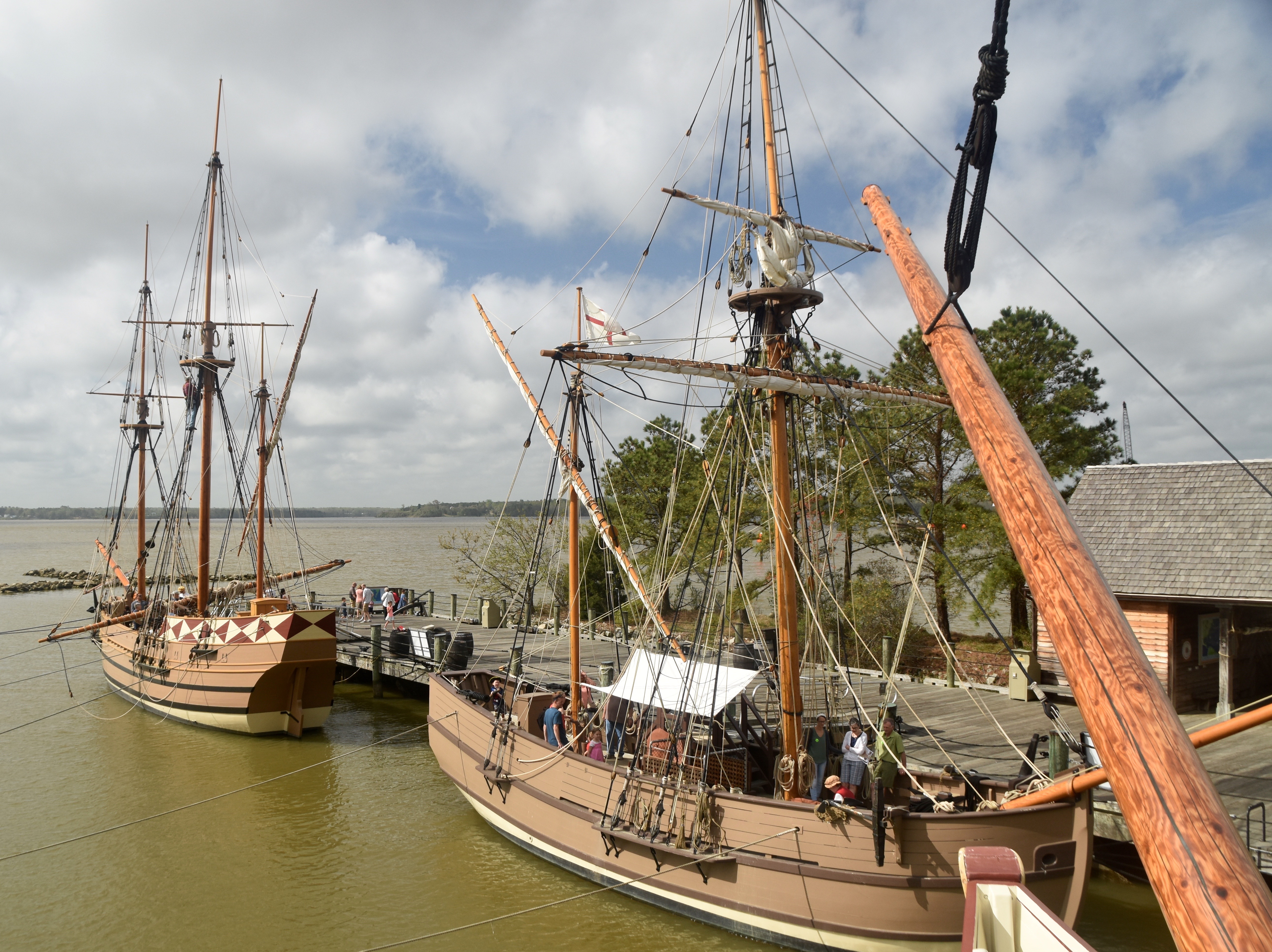
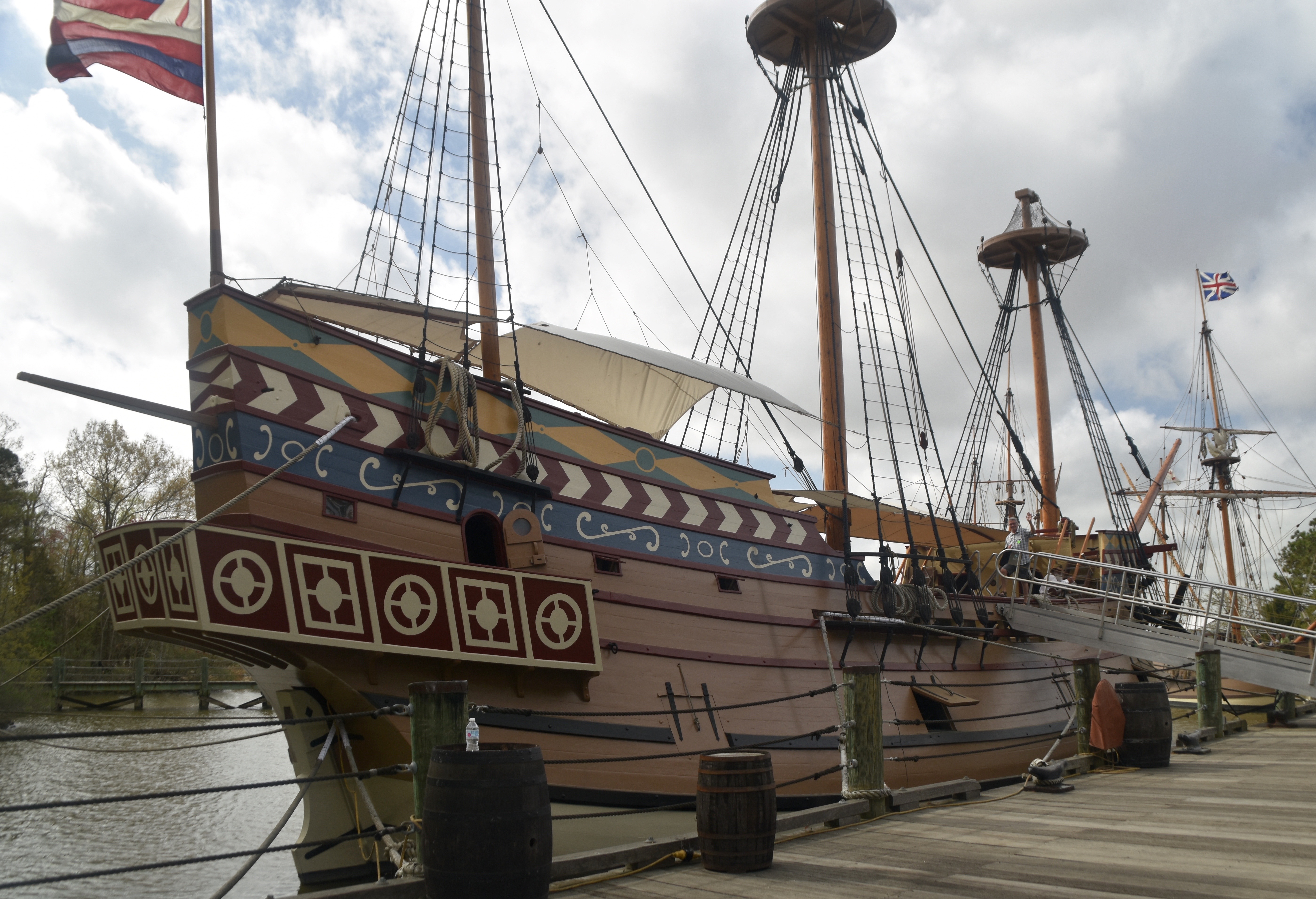
Like the Powhatan Village and James Fort, the three ships are crewed by historical interpreters who can tell you everything about the original voyage, how to rig and sail these ships and of life on board.
Going below decks on the Susan Constant you have to marvel at how 71 people managed to stay sane for the almost five month voyage from England to Virginia or 21 on the tiny Discovery which must have bounced around like a cork on the storm-tossed North Atlantic winter. One thing is for sure – these men and boys were brave to say the least.
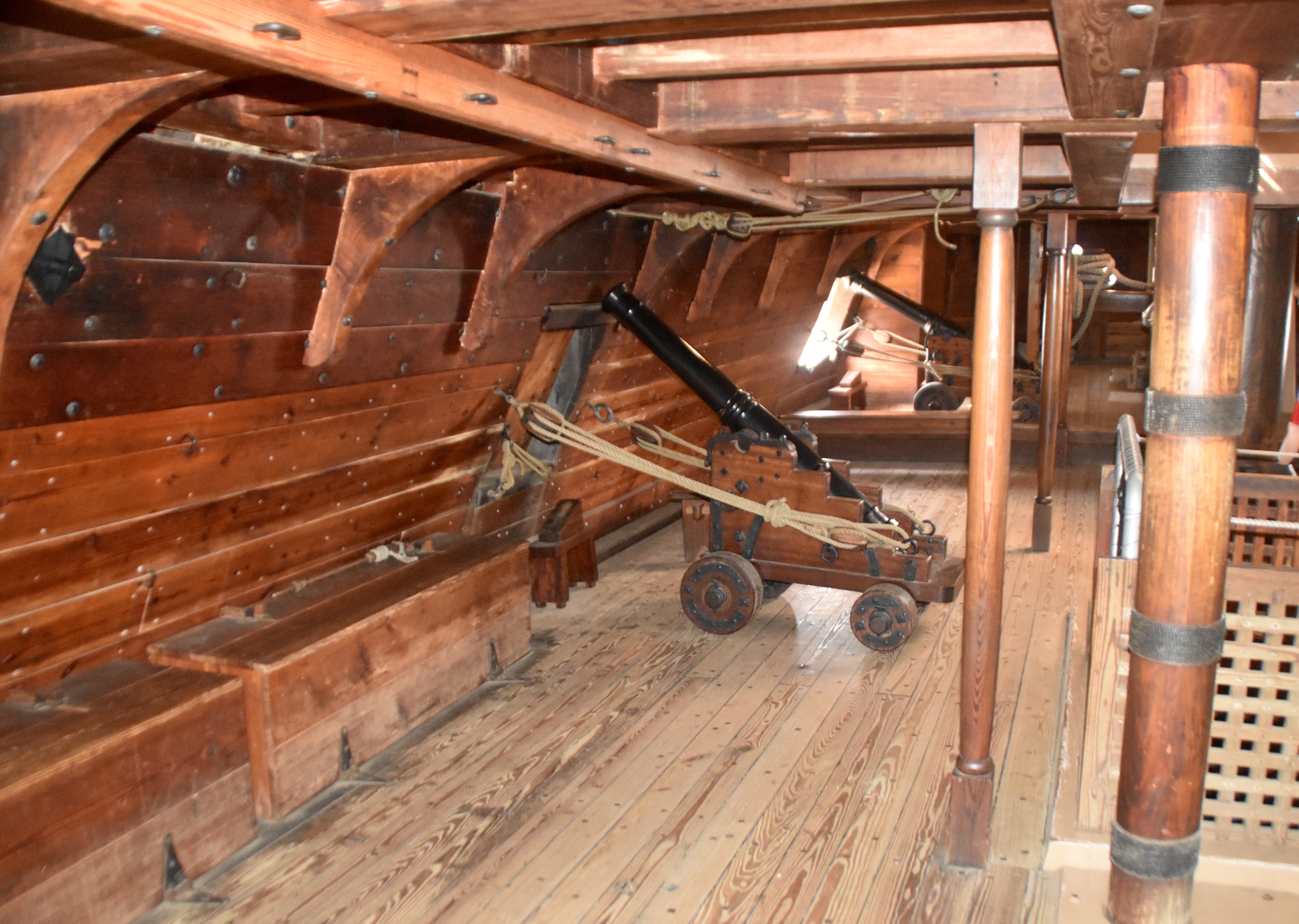
After visiting the ships we made our way slowly back to the museum, had lunch at the restaurant and bought some souvenirs. We were now equipped with the knowledge and imagination to have a better understanding of the events that took place at Historic Jamestown, which will be our next stop and the subject of a separate post. See you there.

